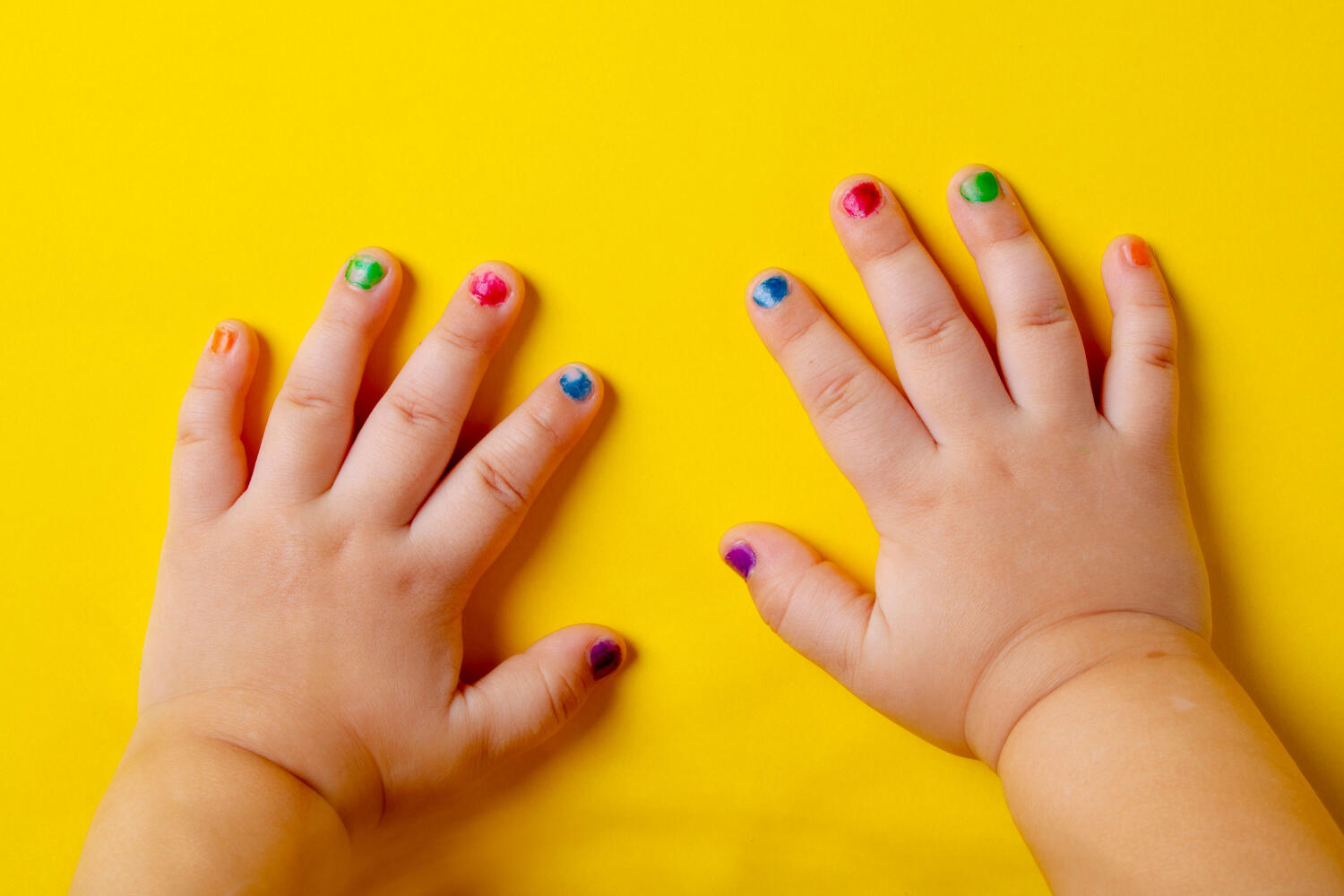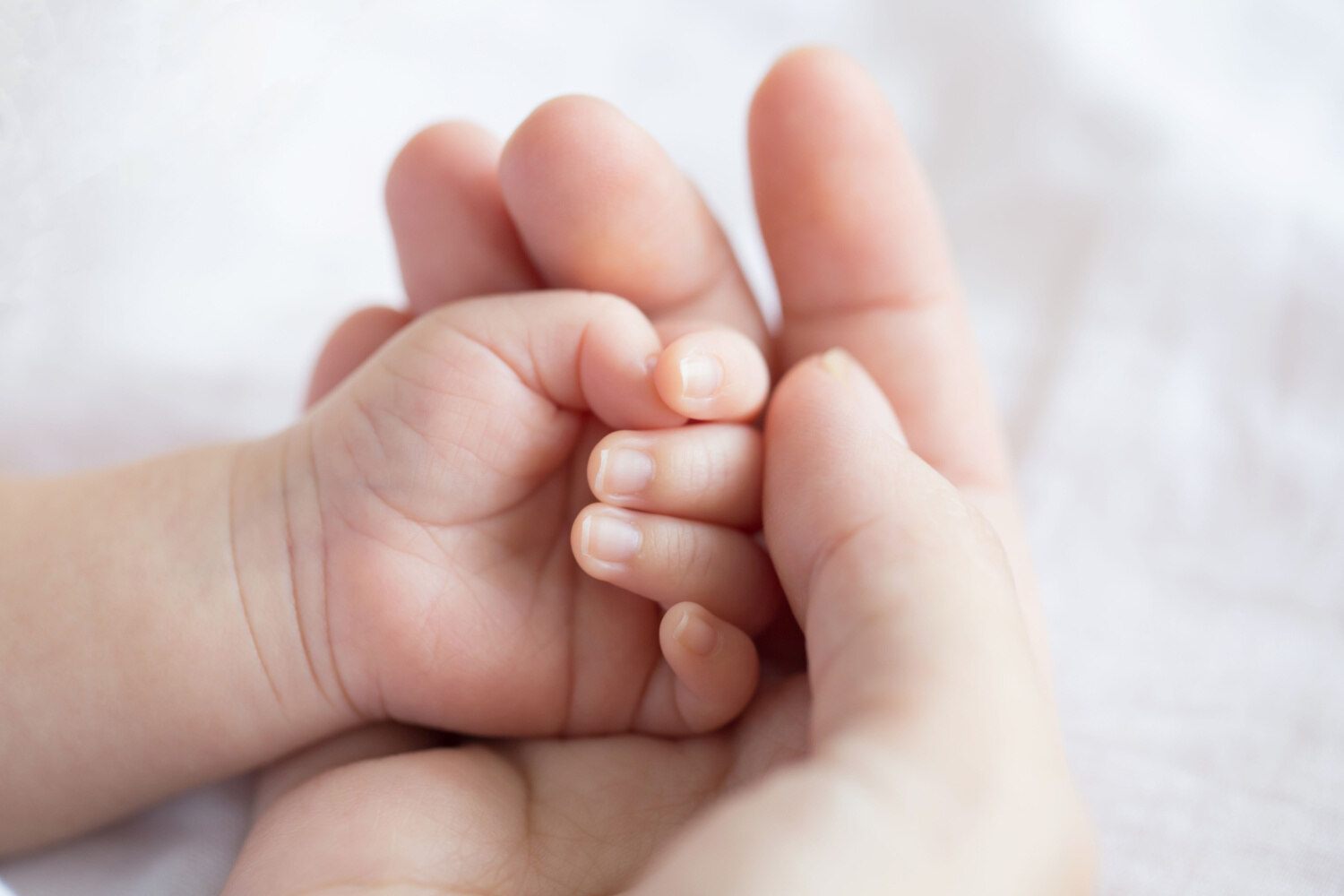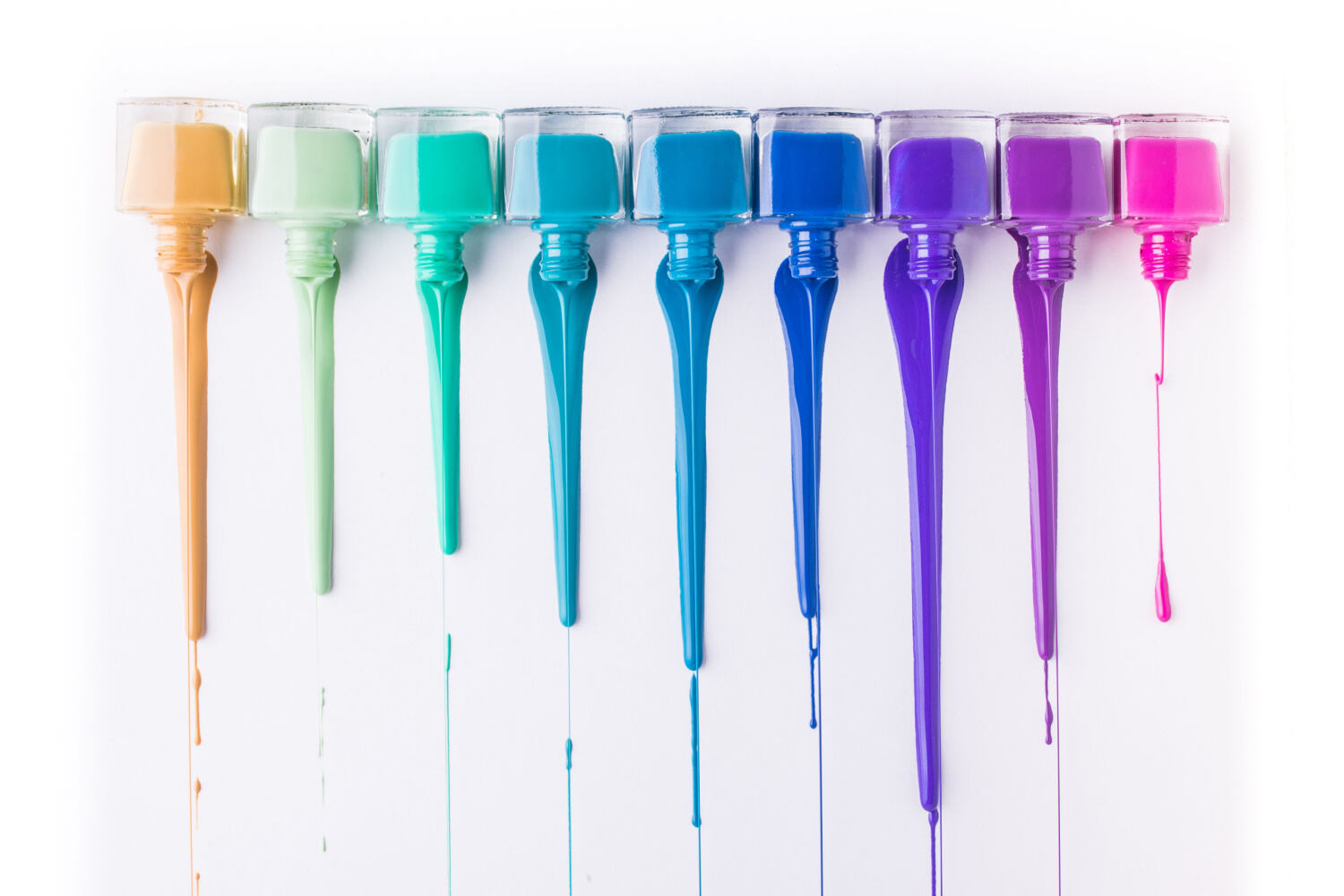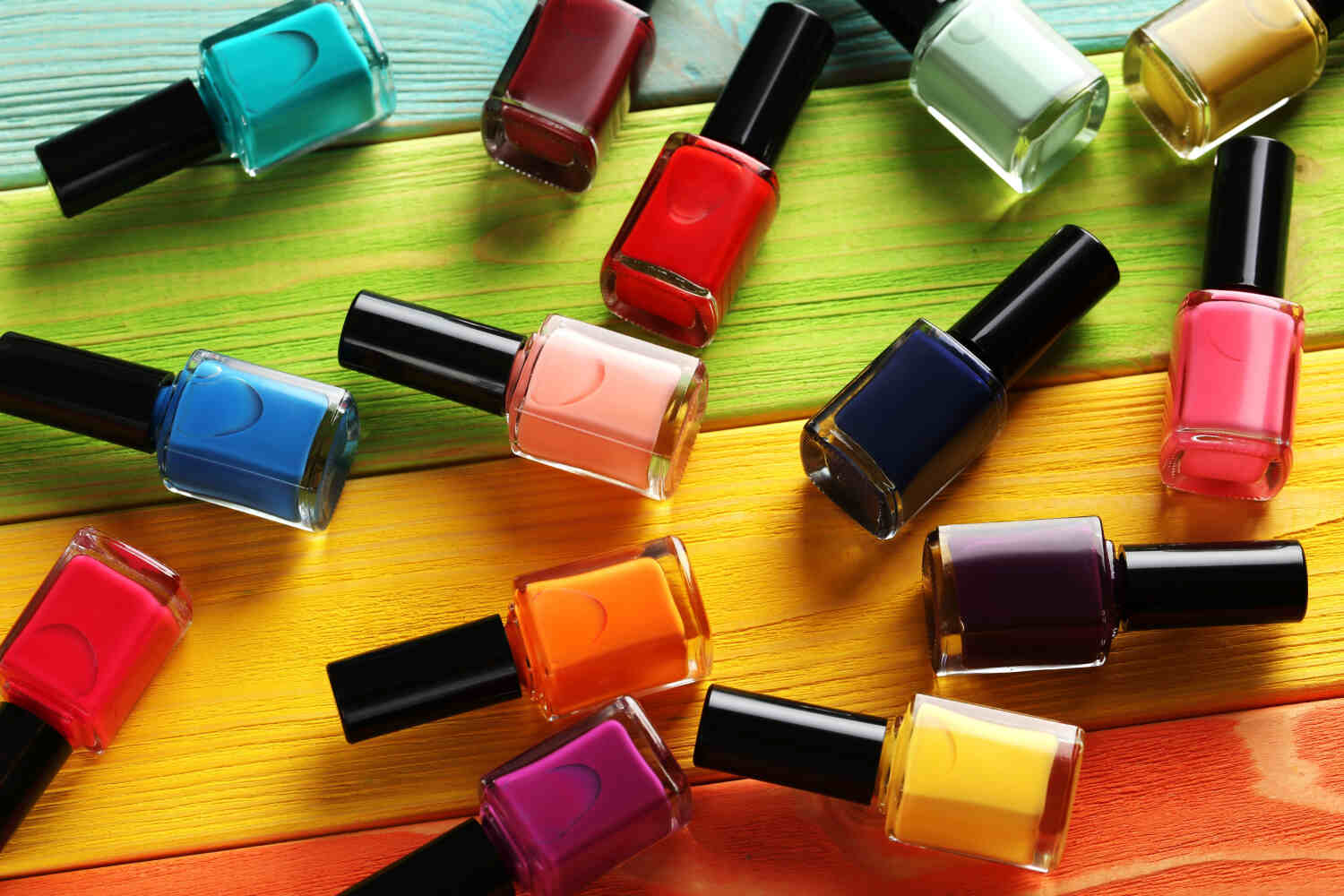
It might seem like fun to decorate babies’ nails with colorful nail polish or paint; however, one should be completely aware of all that goes into the nail paint before painting babies’ toenails or fingernails. Nail polish for babies is not safe. According to experts, traditional nail paints, even the ones labeled “toxin-free” do contain chemicals that could be harmful to a baby’s skin and pose severe health risks if ingested.
Due to a significant rise in exposure to social media, there is a rising popularity of nicely painted nails, which catch the whims of both adults and young children. It might seem harmless to paint a baby’s nails for fun and for a short time and then remove the paint, however, it’s worth pausing and rethinking this “fun” activity.
In This Article
- Is It Safe To Paint Baby’s Nails?
- When Can You Paint Your Baby’s Fingernails?
- When Can You Paint Your Baby’s Toenails?
- Nail Polish Chemicals That May Be Toxic For Your Baby
- How To Paint a Baby’s Nails?
- Precautions To Take While Painting Baby Nails
- FAQ’s
Is It Safe To Paint Baby’s Nails?
Even today, after so much awareness, there are very few regulations when it comes to ingredients that can be used in cosmetics. Toxin-free nail paints are also not exactly free of harmful chemicals. As per scientists and experts who have been looking into nail polishes and their effects, many nail polishes contain extremely harmful chemicals that were not even mentioned in the packages.
These chemicals exist in nail polish at extremely high and dangerous levels, making them entirely unsafe for babies.
Babies put their fingers, and toes in their mouths as a way of investigating the world and engaging in sensory play; this is both needed and normal for them. When a baby have nail paint on their nails, they will slowly ingest this paint and take in the harmful chemicals.
Babies also have softer skin than adults. This means their skin can absorb more of the nail polish, taking the chemicals directly into the skin. The chemicals in nail polishes are also known to be chemicals called endocrine disruptors. These can be especially harmful to developing bodies. Nail polishes with high levels of some of the chemicals have also been known to cause nose bleeds and rashes, and in some cases, even birth defects, asthma, or other problems.
According to experts, swallowing nail polish can also cause nail polish poisoning, and no matter how vigilant one stays, it is not easy to stop a baby from taking their hands and even toes into their mouth, since it’s a natural part of their development.
When Can You Paint Your Baby’s Fingernails?

You should completely avoid painting your baby’s nails during the first year of their life since they tend to put their fingers and toes in their mouth. You can paint a baby’s fingernails when they no longer suck their thumbs or even fingers. This avoids the ingestion of nail polish. Thumb sucking usually stops when the baby is between two and four years of age. At this age, you could also explain to your baby that nail polish is only for nails and not to be eaten. Under age two, it is not advised to paint a baby’s nails.
When Can You Paint Your Baby’s Toenails?
Most babies don’t suck their toenails. Those who do, stop doing it by their first birthday or when they start walking. Once they reach that point, you can apply nail polish to their toenails. But be careful to choose organic, reputed brands.
Nail Polish Chemicals That May Be Toxic For Your Baby

Nail polishes contain a huge list of chemicals. While most of them are extremely harmful, the “toxin-free” ones too have a few chemicals that could be harmful to babies, even if safe for adults. Overuse of nail polish by women is known to be a cause of birth defects in babies as well. While these chemicals are not regulated, scientists have been doing several studies to determine the ill effects of nail polish on users.
Some of the chemicals include:
Toluene
This is the most common stabilizer in nail polishes. This chemical can irritate a baby’s skin, eyes, and respiratory system. These are known to cause headaches, nausea, and dizziness for adults as well, even in minute amounts, so can affect babies as well. Long-term exposure to toluene is known to cause nervous system disorders and developmental issues.
Phthalates
These chemicals ensure that nail paints retain their flowing consistency. They are known endocrine disruptors and can even cause reproductive issues in grown-ups. In babies, they could also lead to developmental delays. Prolonged exposure to this chemical can cause liver and kidney disorders.
Formaldehyde
This is added to nail paints to make them dry and harden after application. It is a well-known carcinogen, a substance that can cause nasal and lung cancer. That makes it toxic for babies. It is known to cause rashes, allergies, and breathing problems in adults who use nail polish a lot.
Camphor
This is added to nail paints to give them a glossy look for a long time. It is also a harmful chemical and is seen as a neurological toxin. The ingestion of camphor, even in very small quantities, can cause seizures among babies or disorientation.
While nail polishes made for babies are free of these chemicals and water-based, making them safe, it’s best to check for all the ingredients before using any of the nail polishes on babies. The water-based nail polish comes off sooner than the adult nail polishes.
How To Paint a Baby’s Nails?
If you would like to paint your baby’s nails, it’s best to discuss it with the doctor. After that, once you have decided to paint the baby’s nails, it is advised to follow the following tips:
- You could make the baby sit in a high chair before applying the nail polish. This way, you will have easier access to the nails. Then place a toy in front to distract the baby.
- Engage the baby in something that will keep the baby still so that there are no accidents leading to paint touching the baby’s skin.
- It’s best to apply a basecoat to protect the nails as much as possible.
- You could hold the baby’s hand to prevent any accidental ingestion.
- Select a nail polish that is designed specifically for babies.
- It might be best to choose subtle hues so that your baby won’t become attracted to them and want to suck their fingers even more.
- Avoid getting the paint on the baby’s cuticle or on the skin around the nails.
- Remove the nail polish in a few days, if not sooner.
Nail polish should only be applied, if at all, on very special occasions. Nails get a chance to regain their normal color and texture when left polish-free.
Precautions To Take While Painting Baby Nails

There are a few things to keep in mind when painting a baby’s nails:
- While painting a baby’s nails, it is best to ensure that the baby sits still to avoid accidents that could lead to paint encountering the baby’s skin.
- Apply the nail polish in an area that is well-ventilated so that the nail polish fumes or strong smell don’t linger long enough to be inhaled.
- Keep the nail polish bottle away from the baby’s reach.
- Even baby-friendly, non-toxic polishes could damage a baby’s nails, and therefore should not be a regular thing.
Despite all the precautions and safe measures, using nail polish for babies is unsafe. As a safe alternative, you can try making DIY nail polish at home for babies. Cornstarch, citric acid, and warm water, when mixed with a drop of food color, make safe nail polish for babies.
FAQ’s
Can Newborns Smell Nail Polish?
Yes, newborns can smell nail polish. They have a strong sense of smell and can even tell their parents apart by their smell. They will be able to smell nail polish, and that’s why it is usually advised to avoid painting your own nails around babies, because of the risk of them ingesting the fumes.
Sources:

